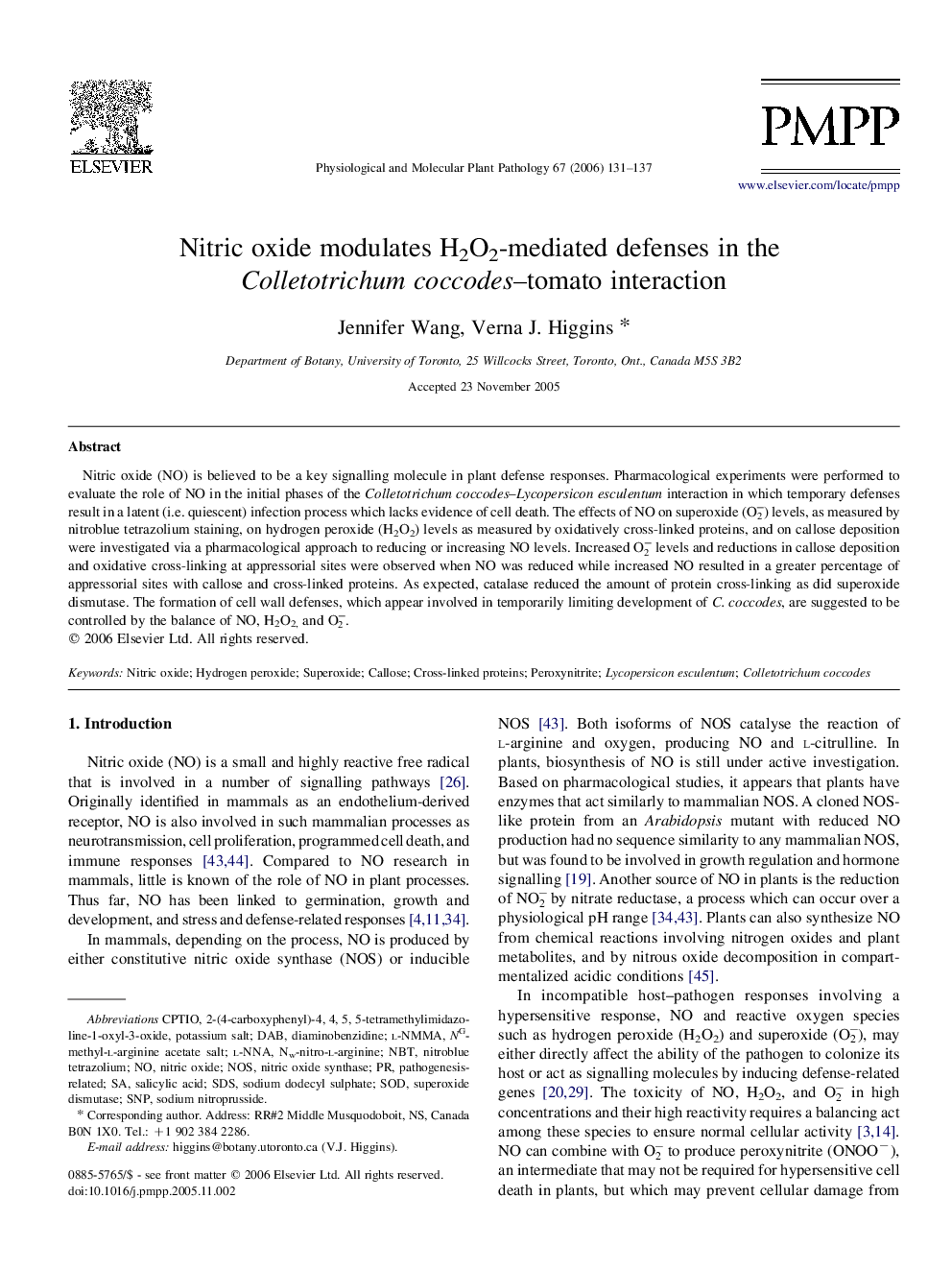| Article ID | Journal | Published Year | Pages | File Type |
|---|---|---|---|---|
| 2836835 | Physiological and Molecular Plant Pathology | 2006 | 7 Pages |
Nitric oxide (NO) is believed to be a key signalling molecule in plant defense responses. Pharmacological experiments were performed to evaluate the role of NO in the initial phases of the Colletotrichum coccodes–Lycopersicon esculentum interaction in which temporary defenses result in a latent (i.e. quiescent) infection process which lacks evidence of cell death. The effects of NO on superoxide (O2−) levels, as measured by nitroblue tetrazolium staining, on hydrogen peroxide (H2O2) levels as measured by oxidatively cross-linked proteins, and on callose deposition were investigated via a pharmacological approach to reducing or increasing NO levels. Increased O2− levels and reductions in callose deposition and oxidative cross-linking at appressorial sites were observed when NO was reduced while increased NO resulted in a greater percentage of appressorial sites with callose and cross-linked proteins. As expected, catalase reduced the amount of protein cross-linking as did superoxide dismutase. The formation of cell wall defenses, which appear involved in temporarily limiting development of C. coccodes, are suggested to be controlled by the balance of NO, H2O2, and O2−.
